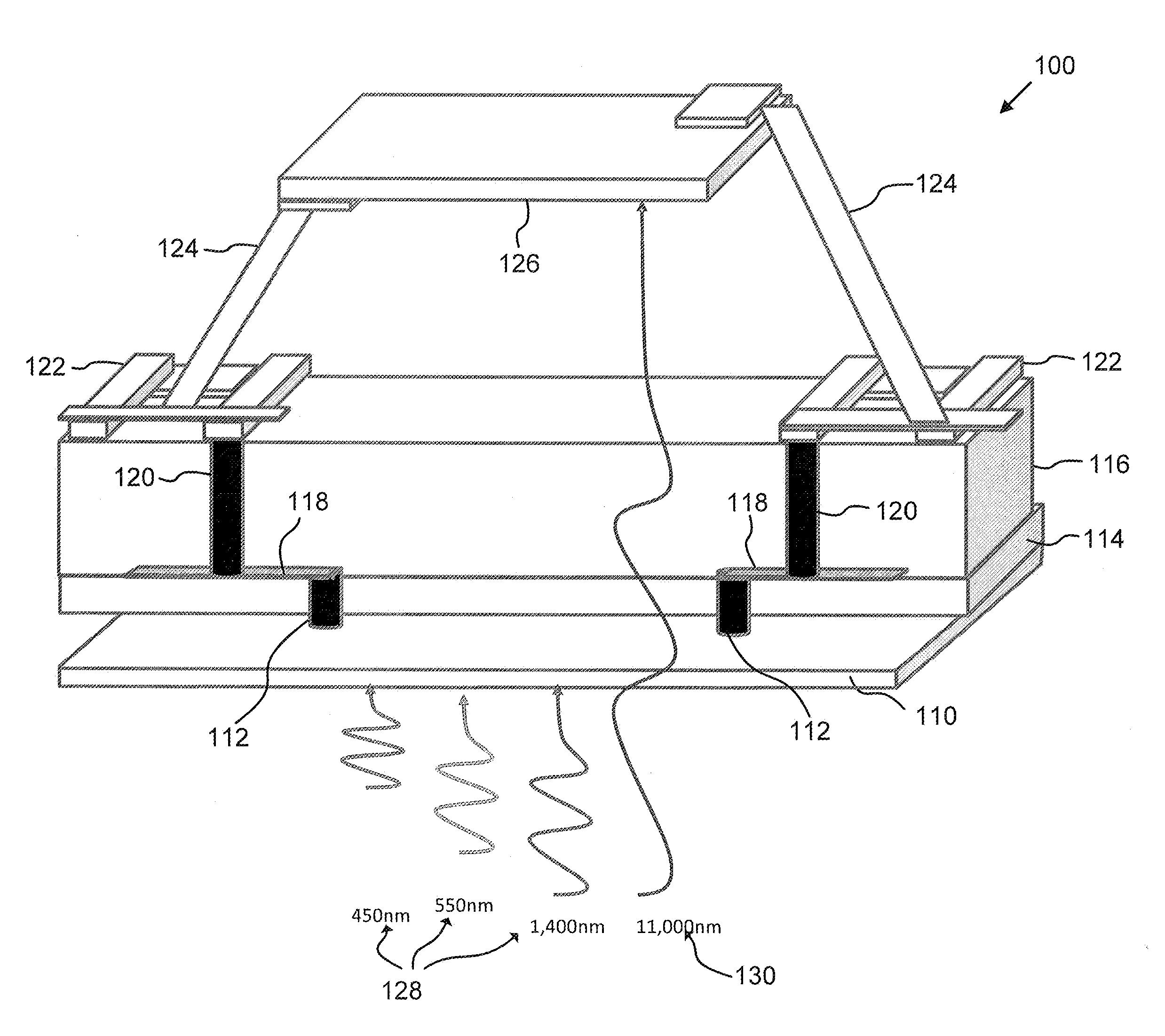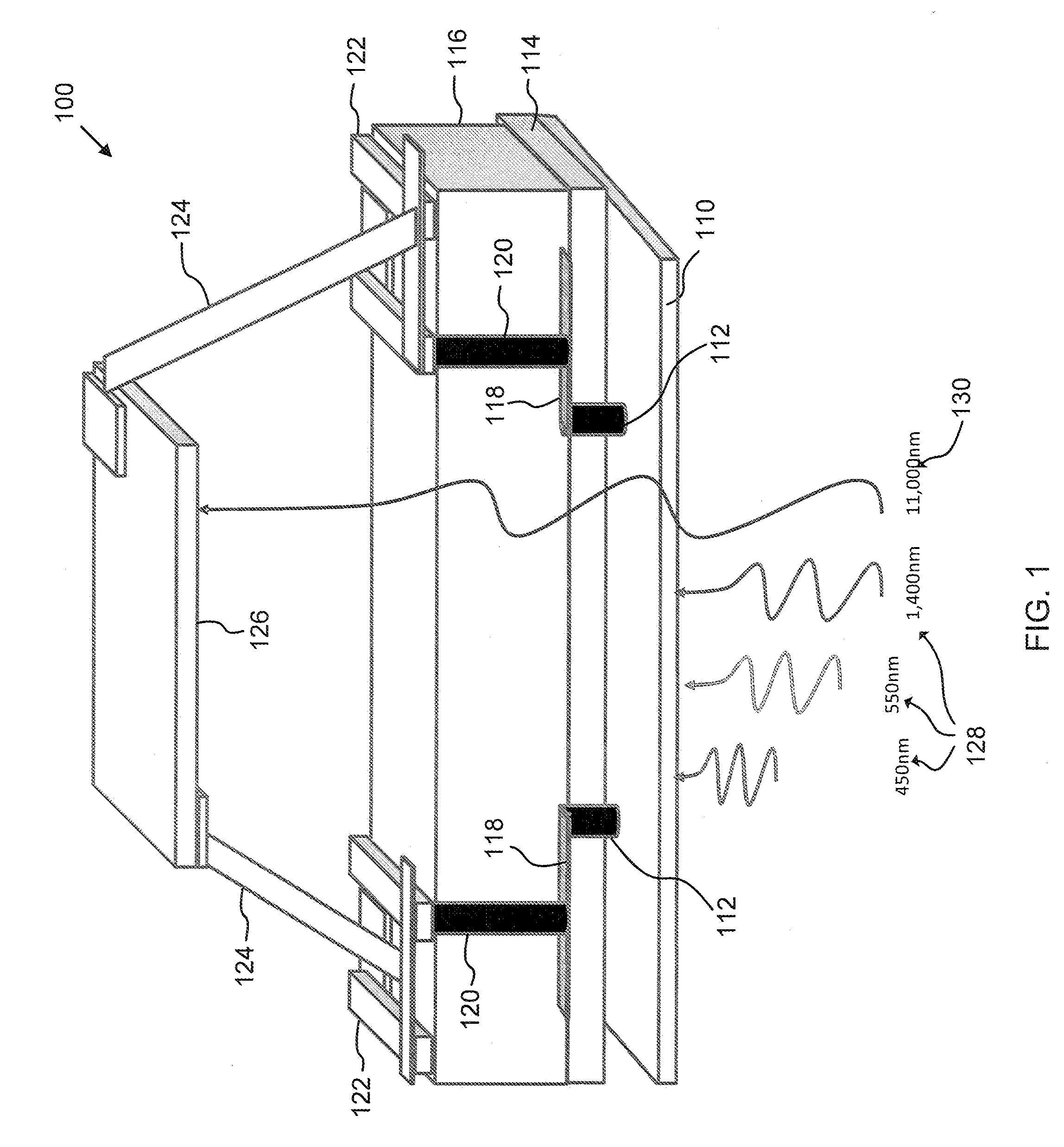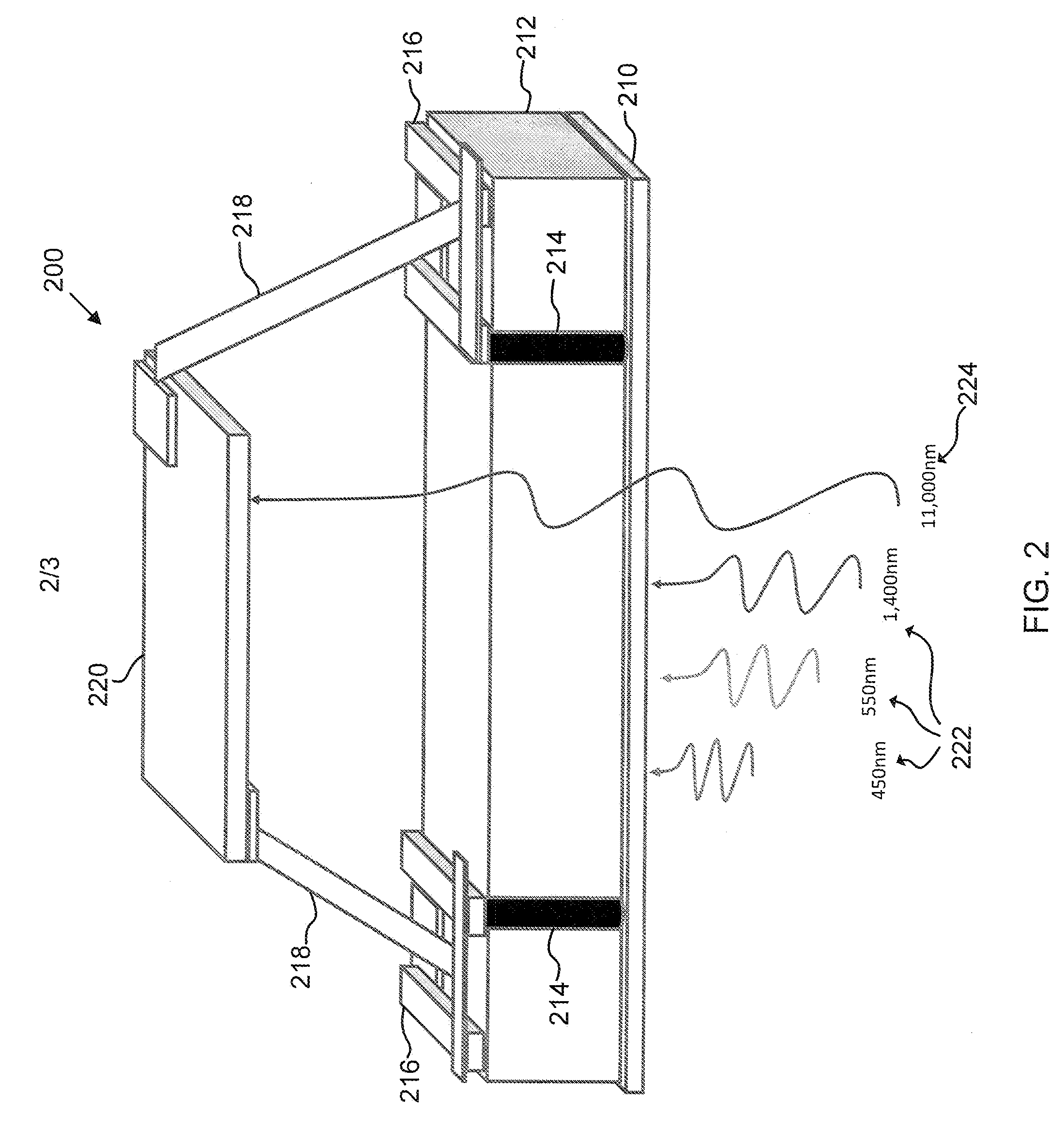Wide spectral range hybrid image detector
- Summary
- Abstract
- Description
- Claims
- Application Information
AI Technical Summary
Benefits of technology
Problems solved by technology
Method used
Image
Examples
Embodiment Construction
As alluded to above, the present disclosure describes systems and articles of manufacture for providing wide-band imagers and methods for making the same. These imagers can be described as in-line, single pixel, “hybrid” detectors which can detect and distinguish between multi-wavelengths. These methods and apparatus are useful in many applications, including applications benefiting from imaging in a variety of light conditions and including night / day imaging. Also, these methods and apparatus can improve imaging through some aerosol obscurations. In some embodiments the imagers and techniques provided herein can be adapted to small, inexpensive, low-power, portable applications such as hand-carried, helmet-mounted and similar applications. In-vehicle and in the field uses are described and will be apparent to those skilled in the art upon reviewing the present disclosure.
Some or all embodiments hereof include a sensor or detector sensitive to certain electromagnetic wavelengths on ...
PUM
 Login to View More
Login to View More Abstract
Description
Claims
Application Information
 Login to View More
Login to View More - R&D
- Intellectual Property
- Life Sciences
- Materials
- Tech Scout
- Unparalleled Data Quality
- Higher Quality Content
- 60% Fewer Hallucinations
Browse by: Latest US Patents, China's latest patents, Technical Efficacy Thesaurus, Application Domain, Technology Topic, Popular Technical Reports.
© 2025 PatSnap. All rights reserved.Legal|Privacy policy|Modern Slavery Act Transparency Statement|Sitemap|About US| Contact US: help@patsnap.com



